Sept 26 Vancouver to Bend (Day 365)
We arrived at Vancouver Pacific Central Station in the early morning hours and enjoyed our last breakfast served in the dining car before we disembarked at around 7:30 am.
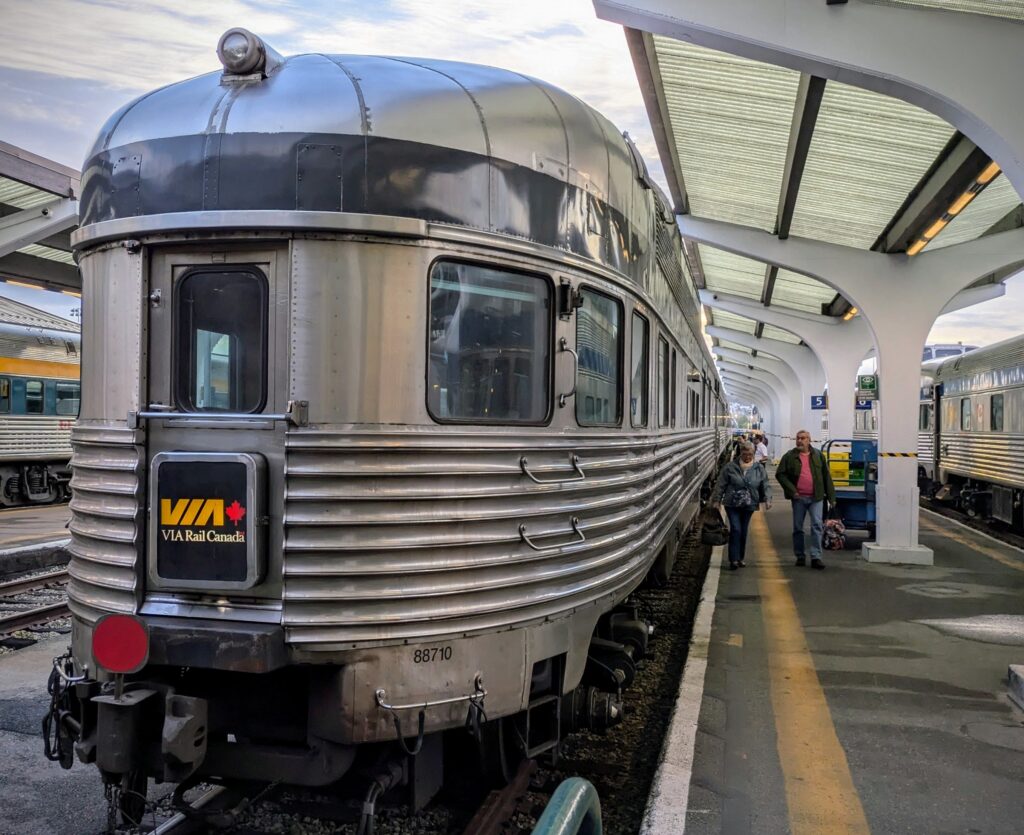
The Park Car at the back of train as we headed into the station.
We had a short time frame to catch the local public transportation to the airport for our flight back to the US.
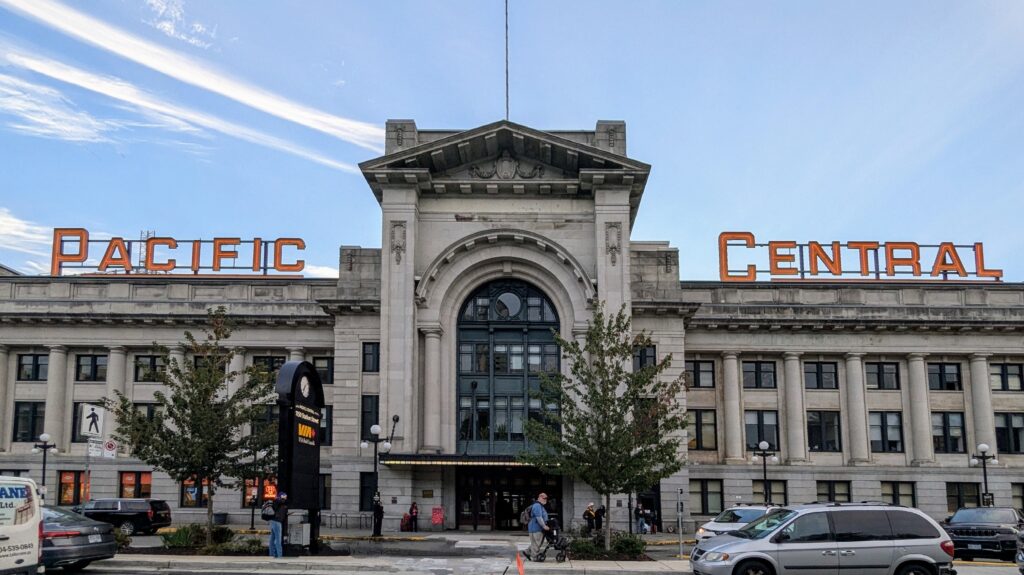
We quickly left the station and headed the one block to the express elevated train to the airport.
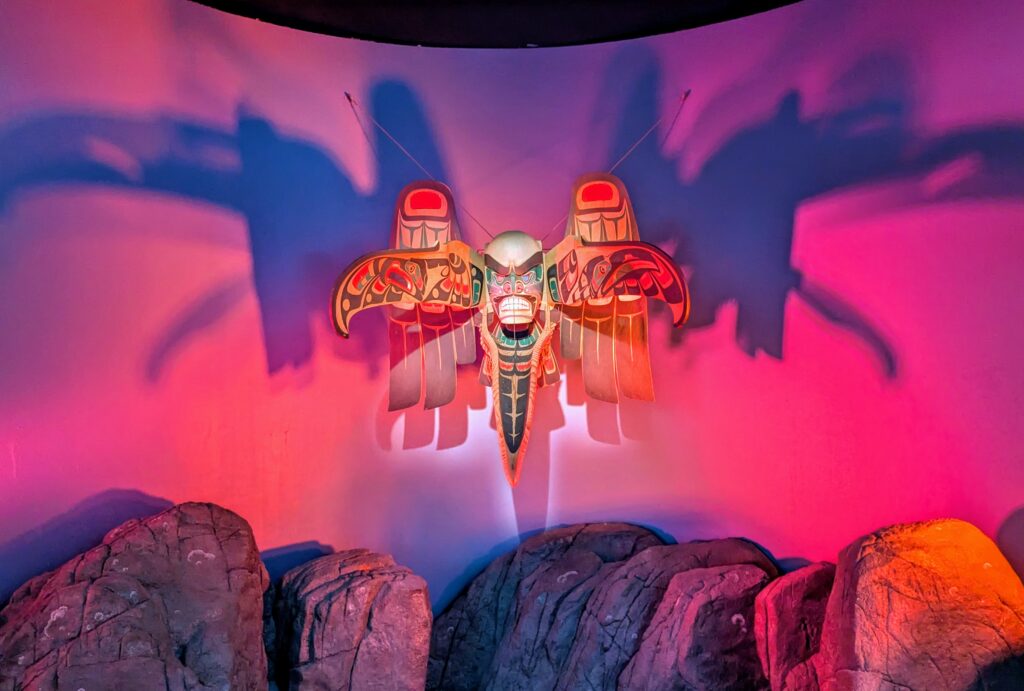
We had a layover in the airport where we enjoyed the local, vibrant art displayed.
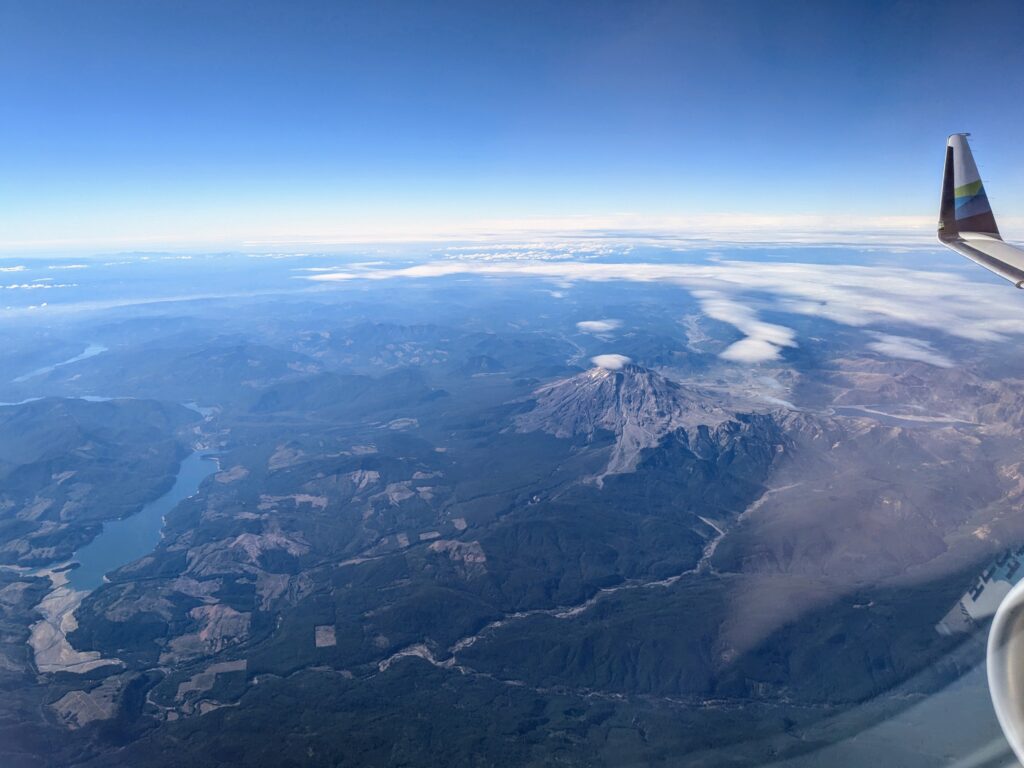
And soon we were on our way, flying into Seattle!
Another flight took us directly to Redmond/Bend where we arrived at about 3pm!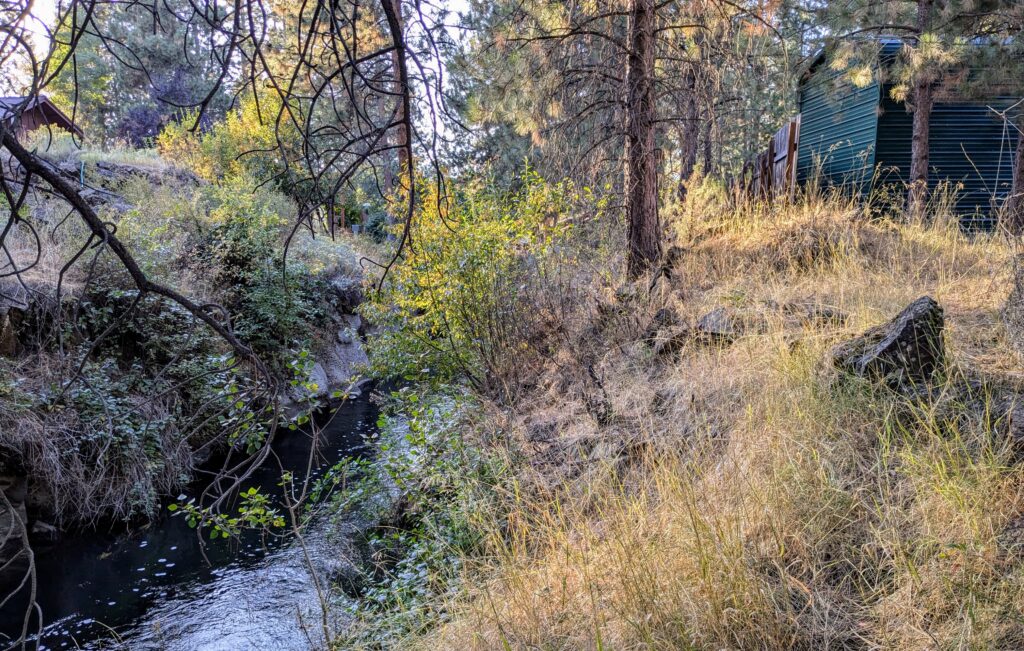
And soon we were admiring the canal in our own backyard!
A year of travel! What an ADVENTURE!
Sept 25 Jasper in Alberta (Day 364)
Our last full day on the train started with a dark, cloudy, rainy morning as we approached Jasper, Alberta, deep in the Canadian Rocky Mountains. At around 8am we spotted our first good view of wildlife, doe elk on a hillside.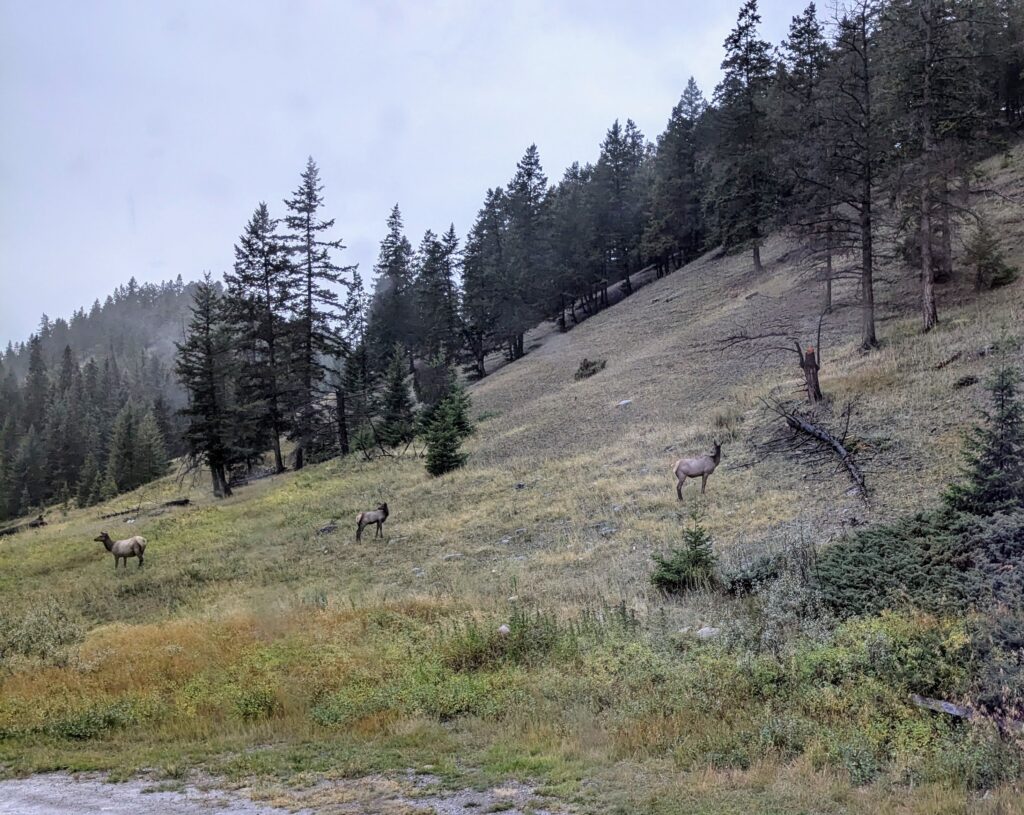
We weren’t scheduled to stop in Jasper, the center of Jasper National Park, due to the devastating wildfire that raged around and ultimately through the town from July 22 until it was finally declared under control on September 7! But we stopped and had a chance to stretch our legs outside, but very few took the opportunity!
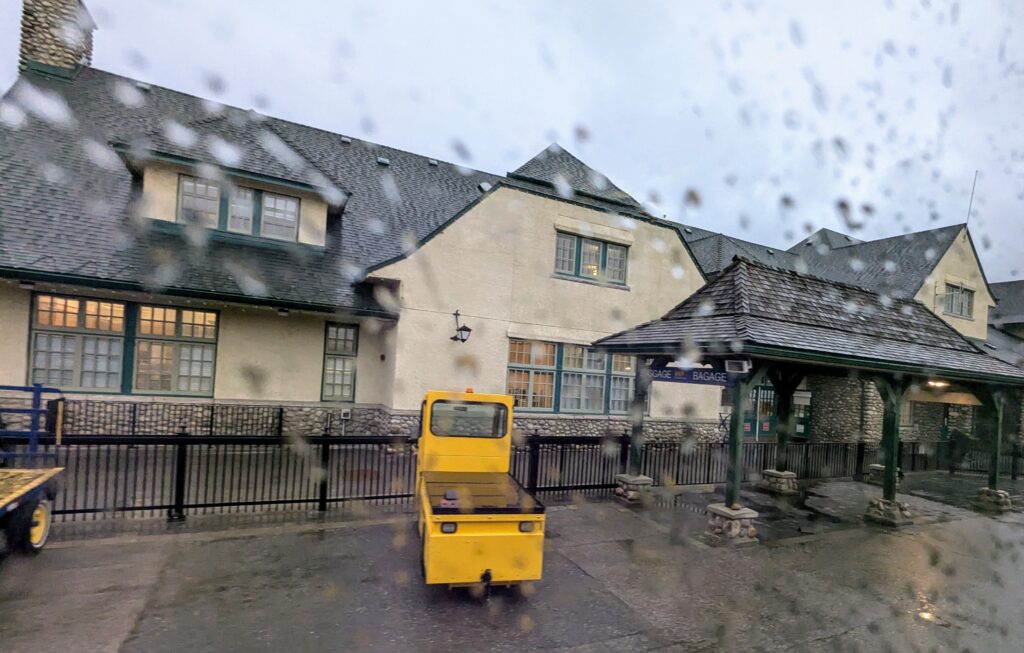
The train station and about 3/4 of the town survived the fire intact, but the passenger train service had been suspended through September.
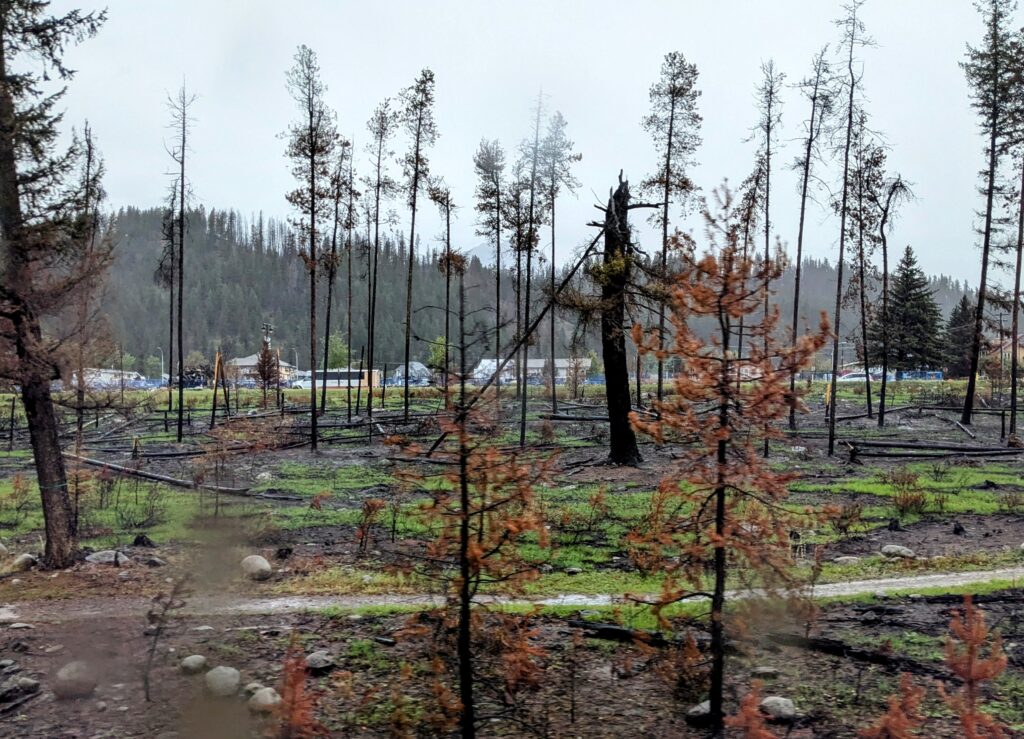
Further down the track we witnessed some of the devastation, with trees burned right up to the tracks, and lots of fencing and blue tarps in the background where the fire destroyed part of the town.
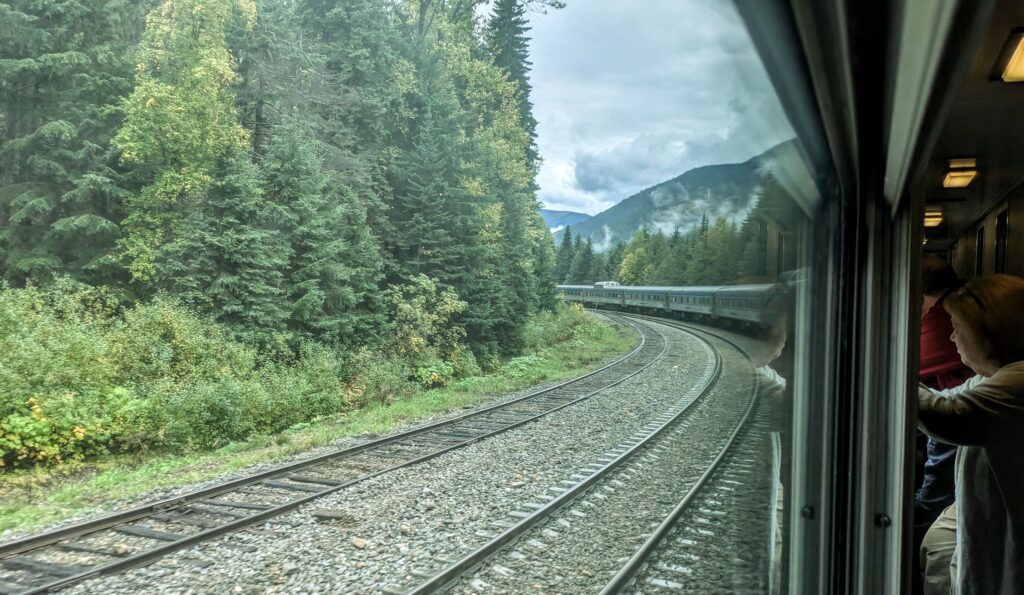
A contemplative moment for a passenger as we continued through the grandeur of the Canadian Rocky Mountains.
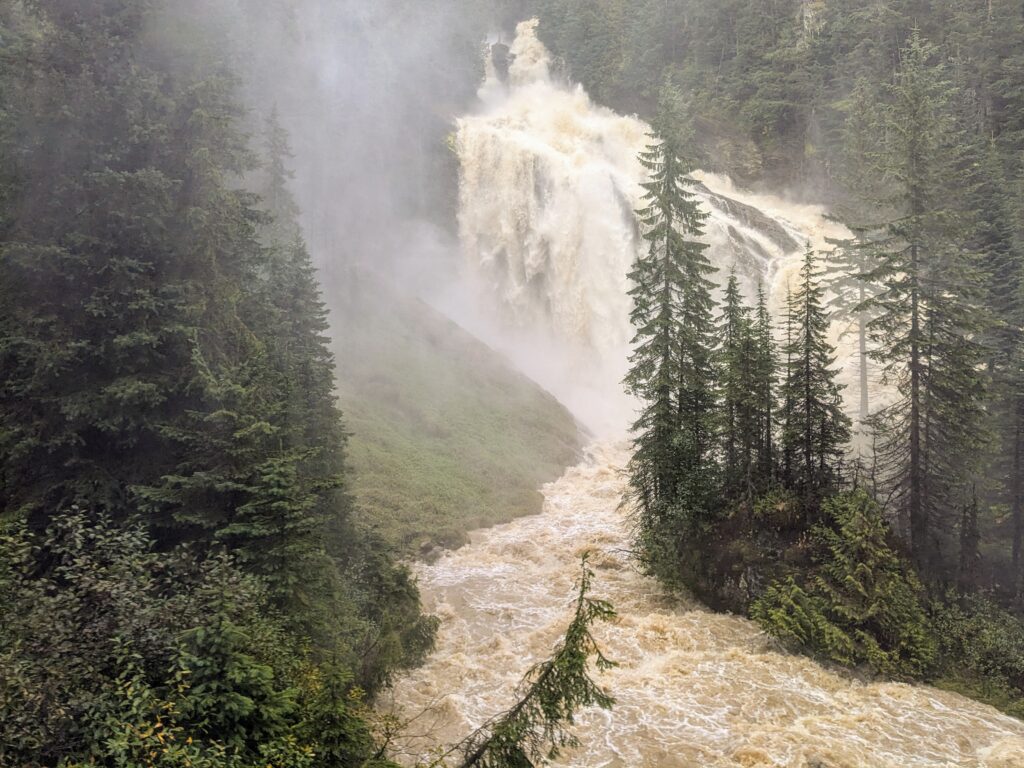
Our last fantastic look at a tremendous waterfall on the North Thompson River as we descend the west slopes of the Canadian Rockies. We were feeling a little under the weather, which looked pretty cold and damp anyway, so we requested dinner in our cabin. The train crew obliged and soon set up a table, white tablecloth and all, and soon brought our scrumptious meal to us. I ordered the lamb and Robert ordered the salmon. It was so good I forgot to take pictures!
Sept 24 Saskatchewan into Alberta (Day 363)
We traversed the province of Manitoba through the night, so, no pictures available. We woke to another sunrise, this one over the flat landscape of Saskatchewan.
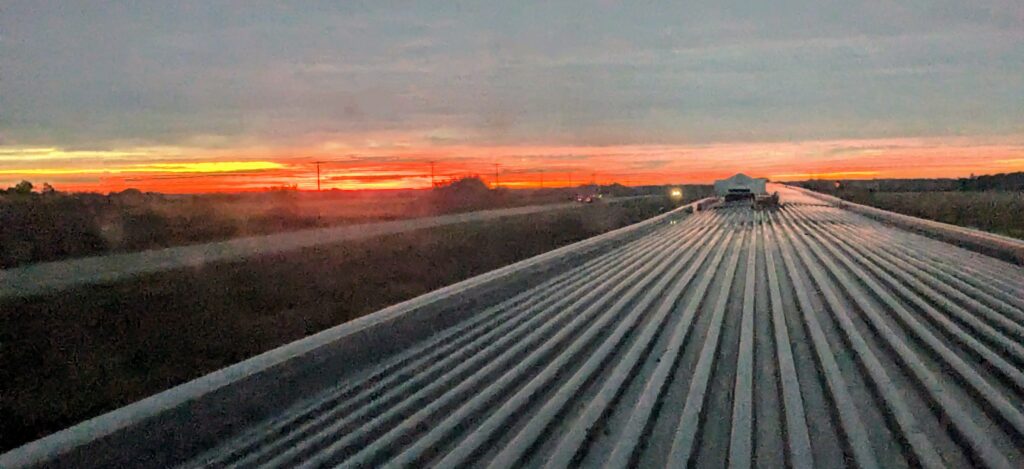
About 6:30am.
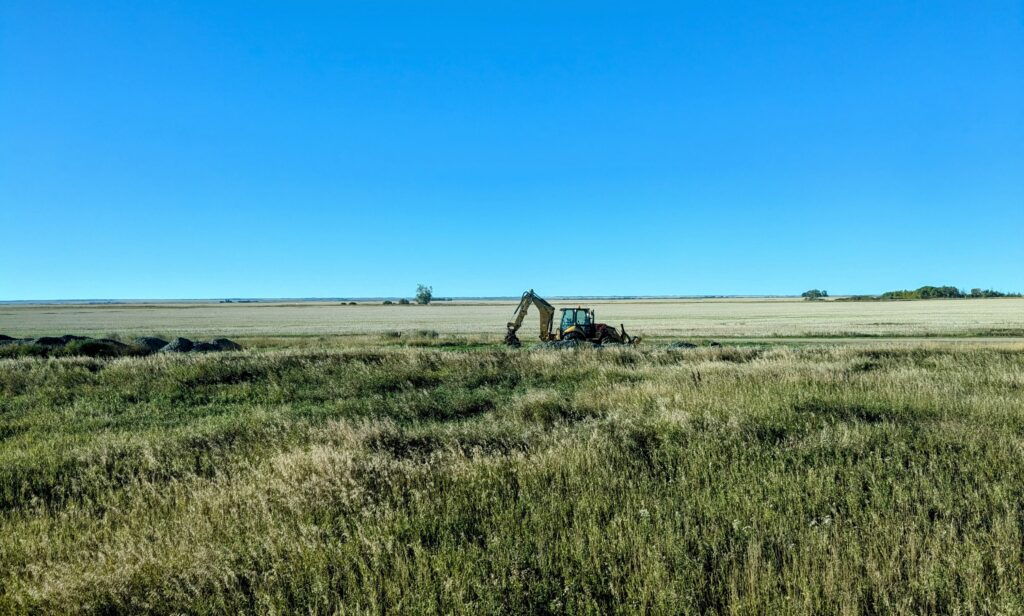
The clouds dissipated by 9am to reveal the really flat landscape!
It reminds me of the theme song ‘My Happy Place’, from “Corner Gas”, a Canadian comedy series from 2004 to 2009 set in Saskatchewan. I also referenced this song while traversing the Nullabor Plain in Australia!
“It’s a great big place
Full of nothing but space
And it’s my happy place.
You can watch your dog run away,
And out here it can take 3 days.
You think there’s not a lot goin’ on.
But look closer baby, you’re so wrong,
And that’s why you can stay so long,
When there’s not a lot goin’ on.”
Watch another version of the song from an episode of the show
HERE!
Our next long term stop was Saskatoon or ‘Toon Town’ to locals! Unfortunately we weren’t ‘in’ town proper, but on the far southwest edge of town so I can’t offer any pictures or accounts of the city. I can however post pictures of some of the train car exteriors.
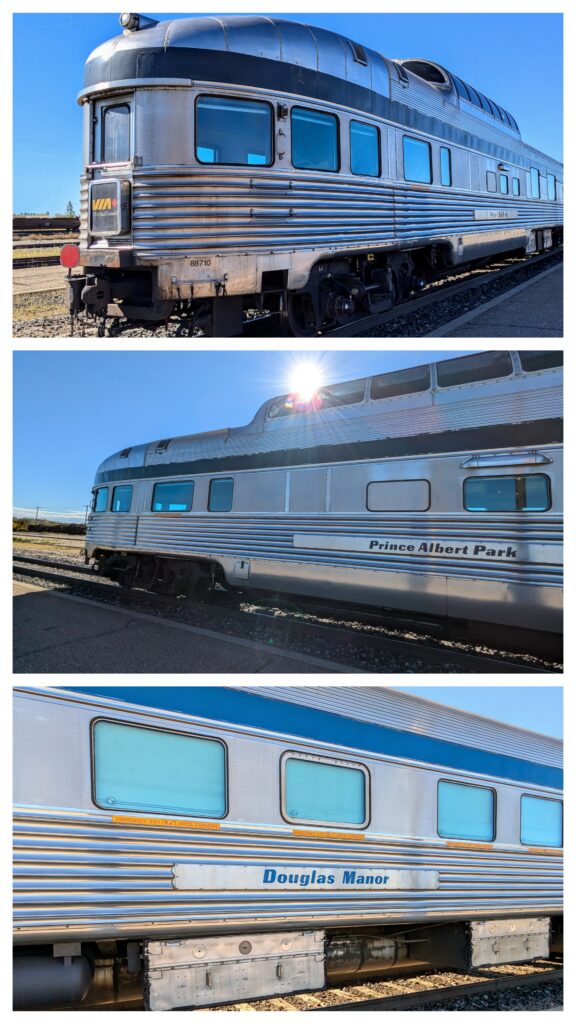
The top and middle are of a Park Car, the last car on the scenic train, the Premium Lounge car!
This one named for
Prince Albert Park, a large National Park in the middle of Saskatchewan. We weren’t staying in the Douglas Manor car, that would have been a funny coincidence!
We reboarded with a few munchies from the station vending machine and continued across Saskatchewan Province towards Alberta.
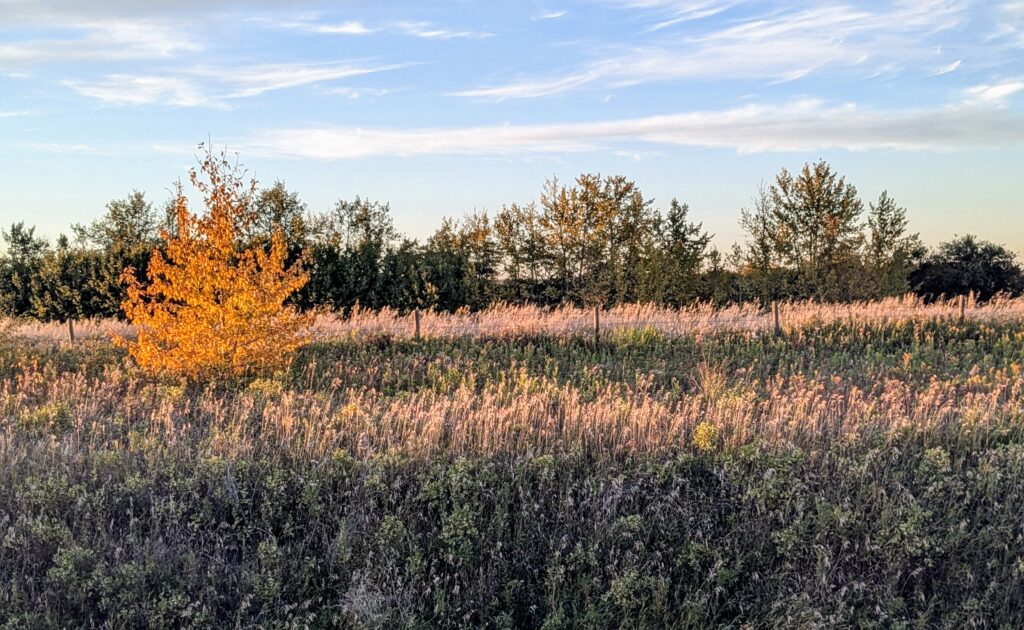
Beautiful evening light a little after 7pm.
The evening sky and the beautiful sunset were the background for our dinner in the white linen tablecloth dining car!
Sept 23 Day 2 on The Canadian (Day 362)
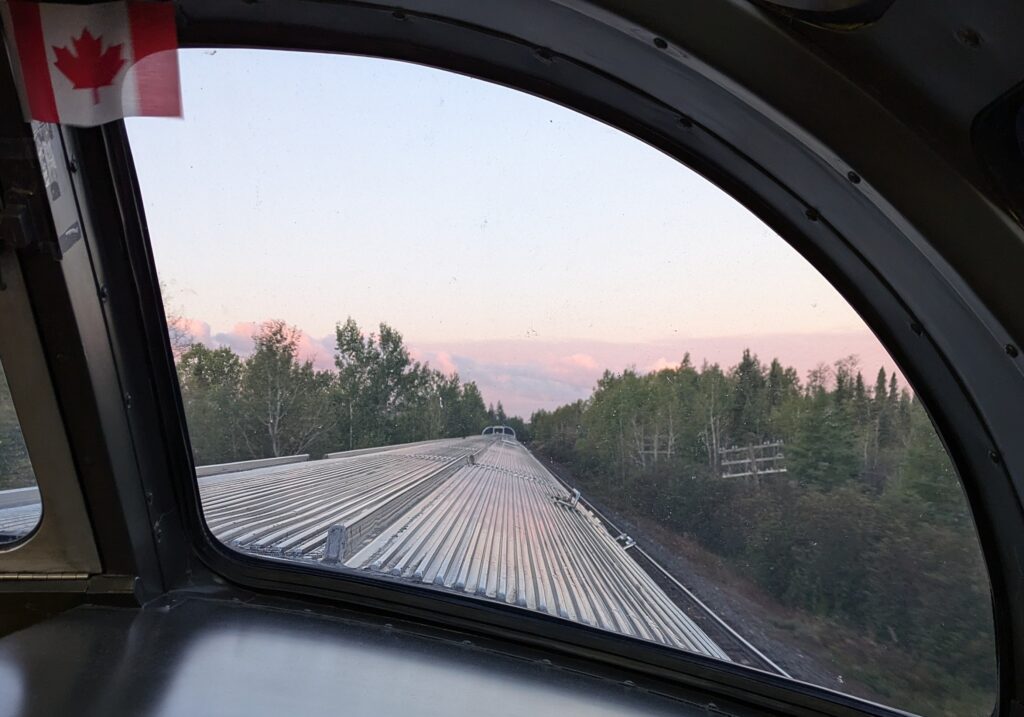
Early morning, 6:44am, in the observation car as the sun rose on day 2 of our long train journey.
We weren’t the first to get up in the Dome Car, but we scored a first row seat! We arrived earlier while it was still dark out, after a restless night rocking and rolling in our sleeper bunks!
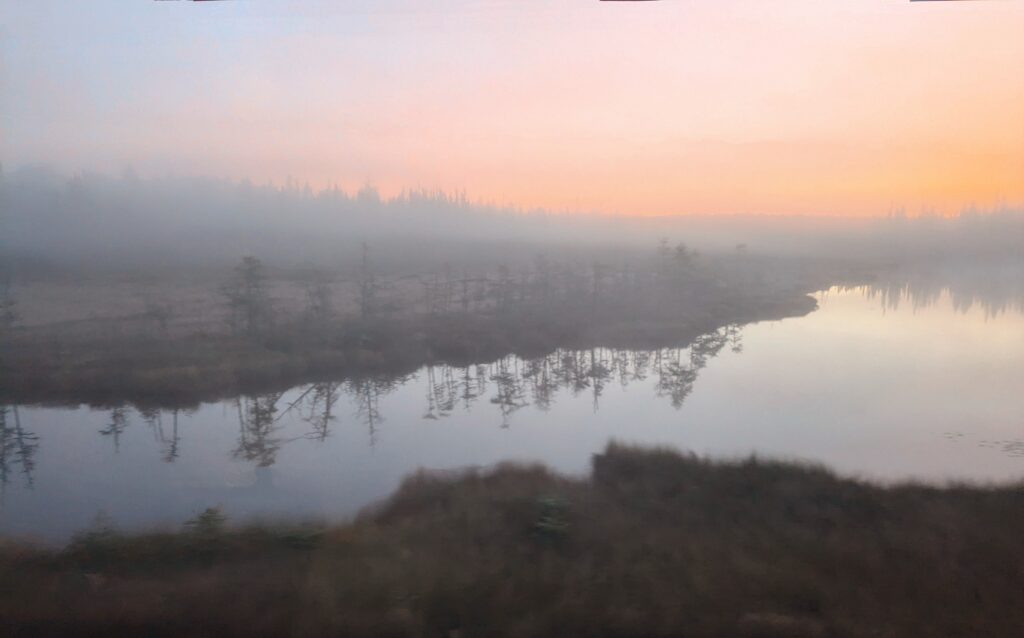
About an hour later we were surrounded by the fog bank, seen up ahead in the above picture.
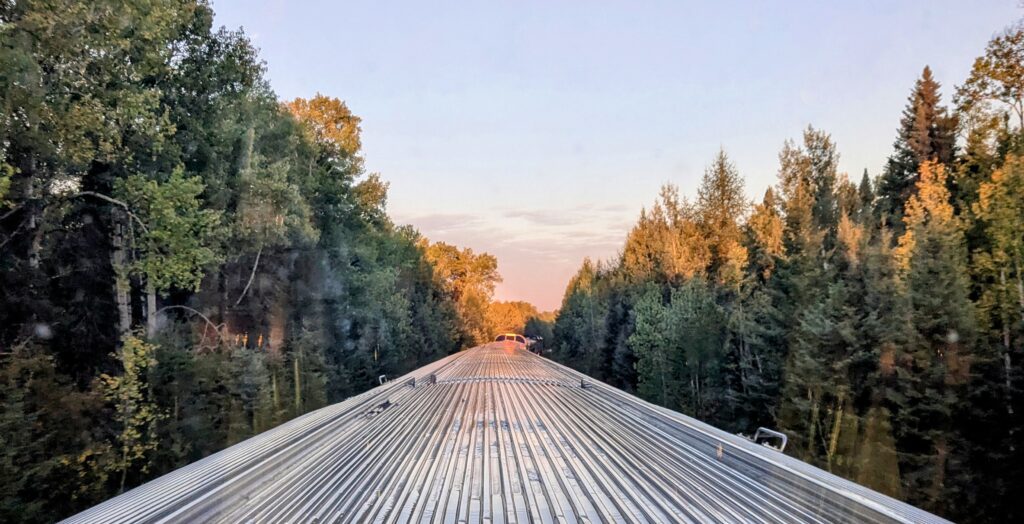
A short while later the fog lifted.
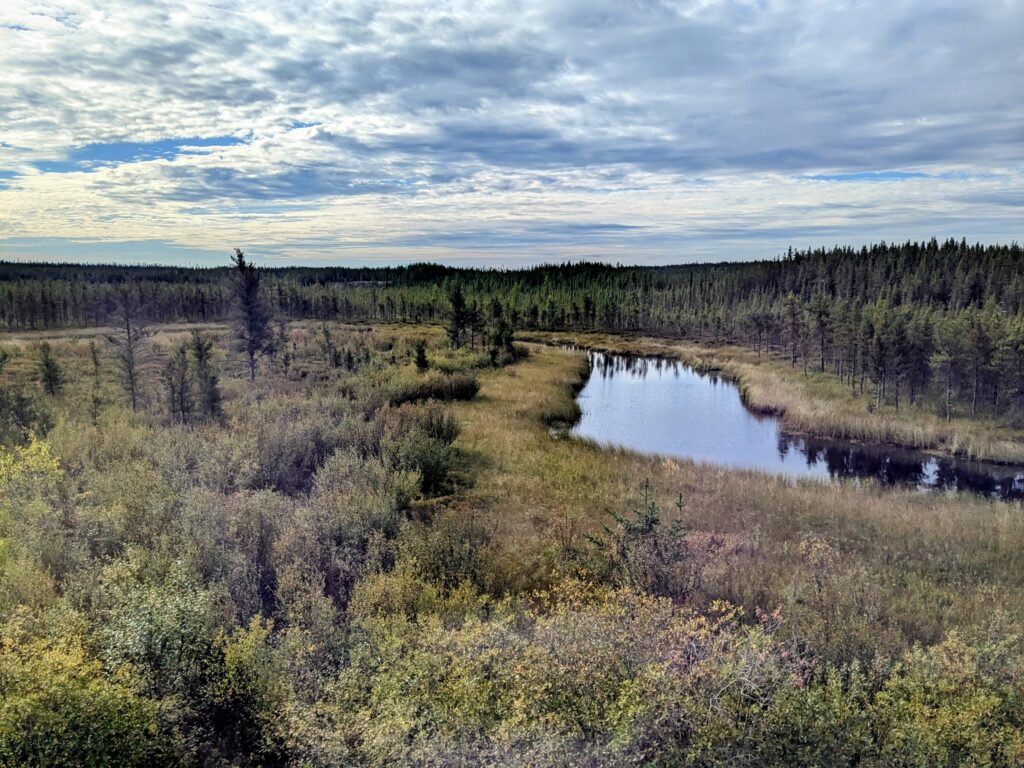
The scenery is fantastic in this remote area of boreal forest north of Lake Superior.
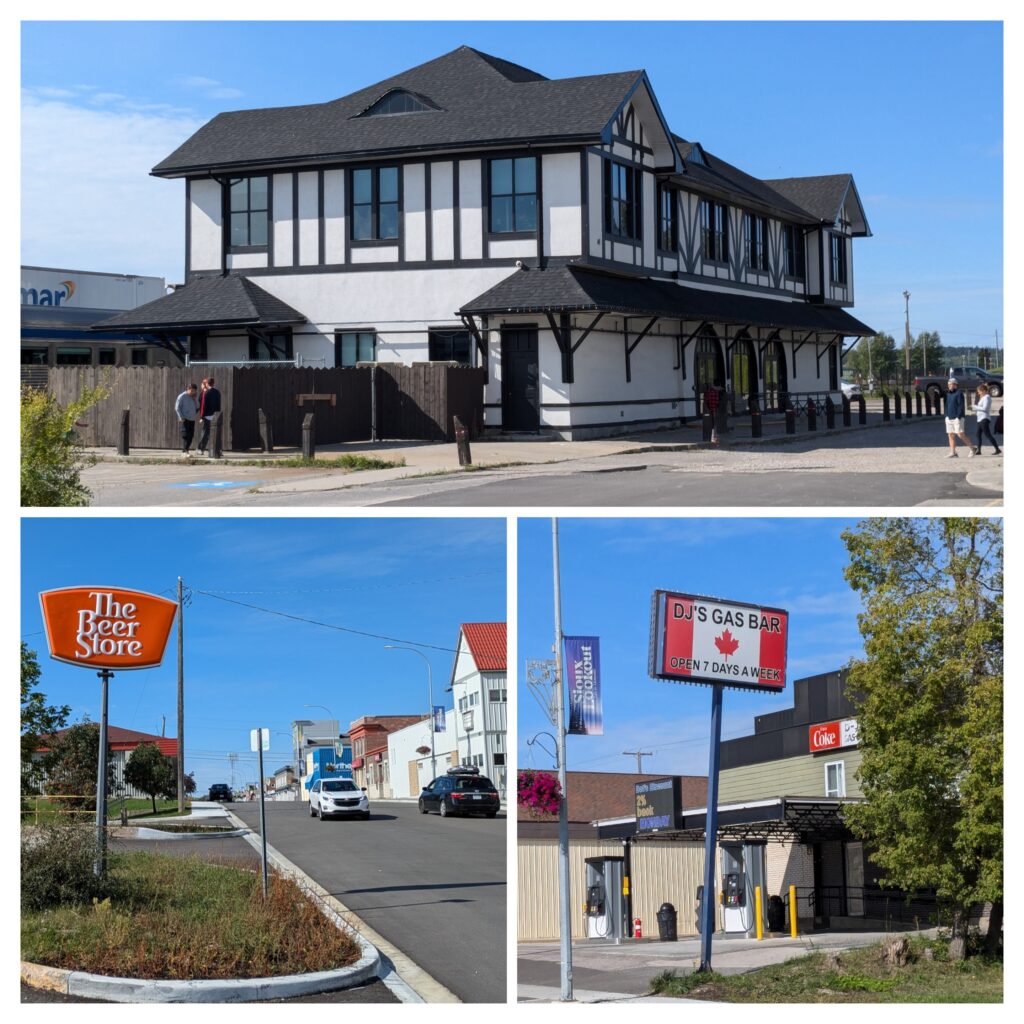
At around noon we made our first long term stop at Sioux Lookout, named for the local mountain from which the native Ojibwe people could detect the approach of Sioux warriors with enough time to guide women and children to safety before intercepting the invaders. We had a chance to walk around a little bit in the small town. The Gas Bar is a gas station, darn it, and the beer store was not an option because we aren’t allowed to consume our own alcoholic beverages on the train!
Sept 22 The Canadian (Day 361)
We had an early morning wake-up and enjoyed a hearty breakfast in the hotel restaurant. We quickly packed our bags and headed to the railway station.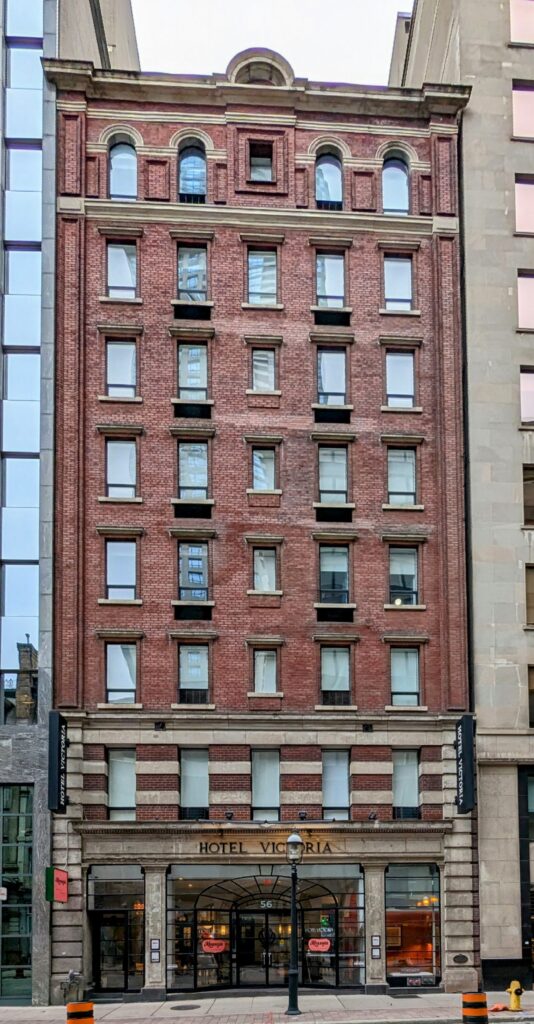 Hotel Victoria, our accommodation for the night, is an ‘old school’ hotel, comfortable and within walking distance to Toronto Union Station.
Hotel Victoria, our accommodation for the night, is an ‘old school’ hotel, comfortable and within walking distance to Toronto Union Station.
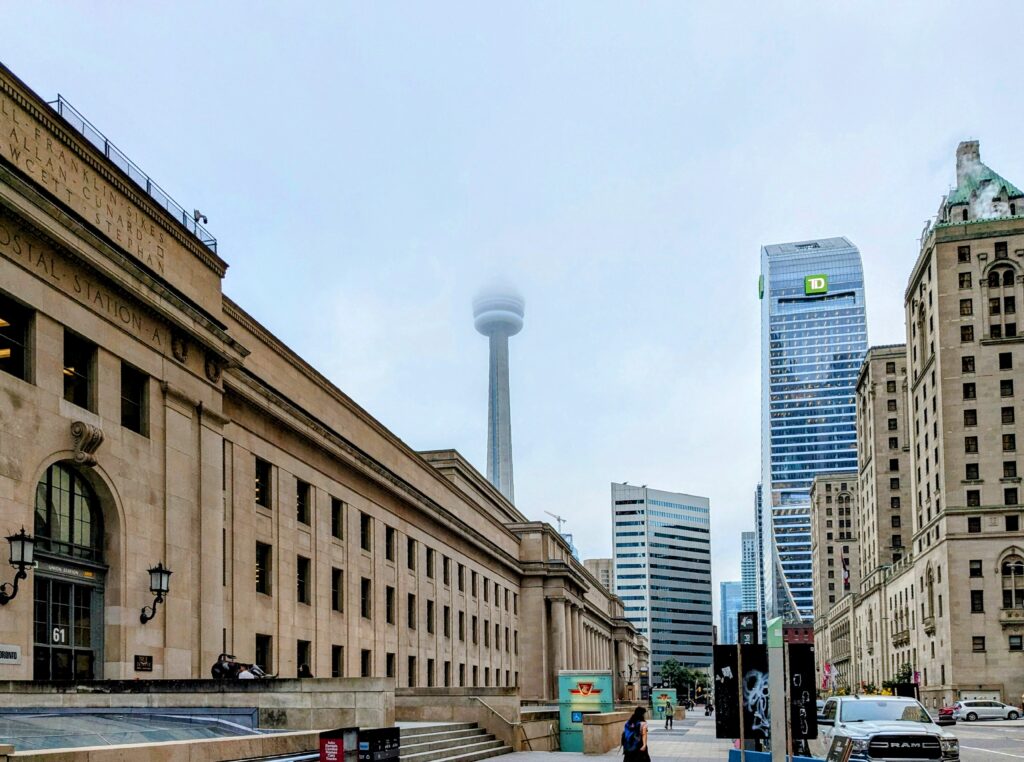
Under overcast skies we reached Union Station and saw that the tower’s top was engulfed in the clouds.
CN Tower is a Toronto landmark, opened in 1976, built by the railway company Canadian National Railway as a communications tower. It has a revolving restaurant at the top and an “Edge Walk” like the Auckland Tower, but no ability to (safely) jump off, so we didn’t pursue that adventure!
We arrived at the station with plenty of time to check-in for our 4 day/4 night rail excursion all the way to Vancouver, B.C. on “The Canadian”. We boarded the train and settled into our sleeper cabin for the 9:55am departure! The train headed north through Toronto and into the wooded countryside alongside the marshy edges of Lake Huron.
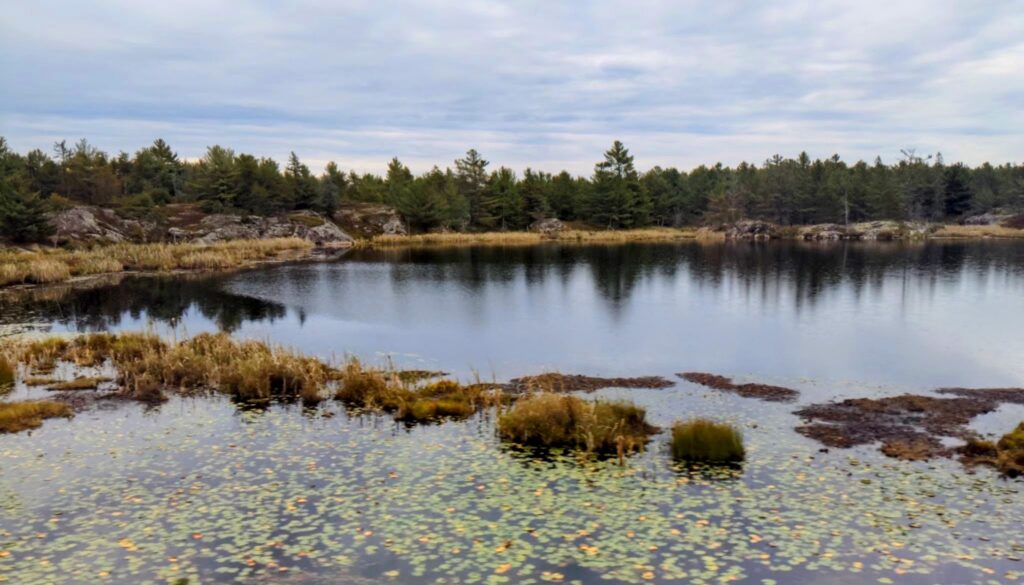
We had a view of the marshes rather than Lake Huron!
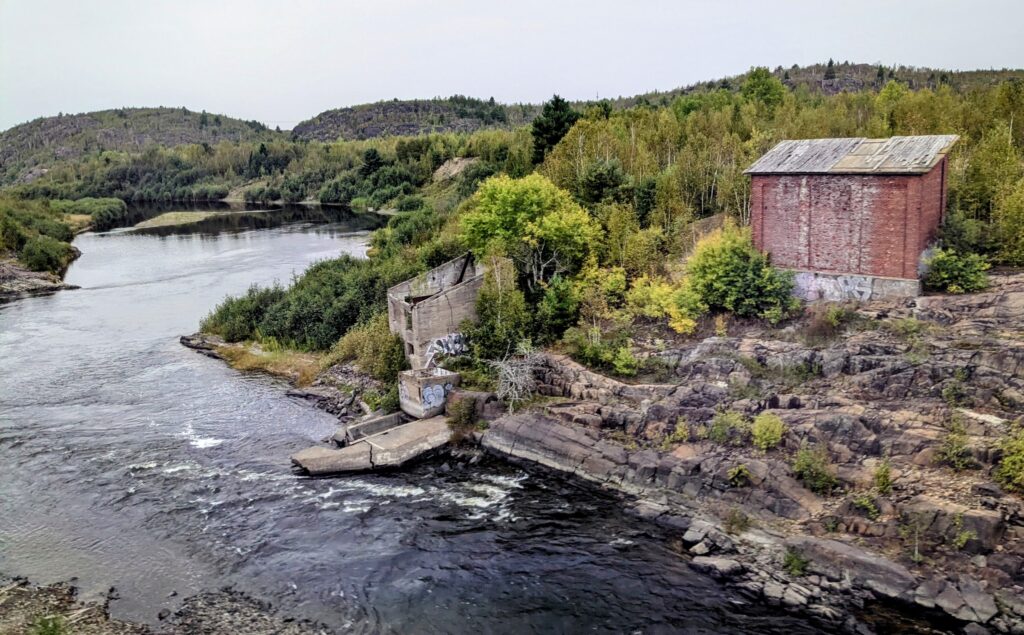
By 4pm we were headed into Sudbury, Ontario and crossed the Wanapitae river.
We saw huge smokestacks in the distance, a smelter for nickle ore that is mined in the area. In the mid 1800’s logging was the main industry, giving way to mining of copper and nickle ore in the early 1900’s that continues today. After 4pm we had access to the Premier Lounge, the last car on the train, so we took advantage of that to meet fellow travelers!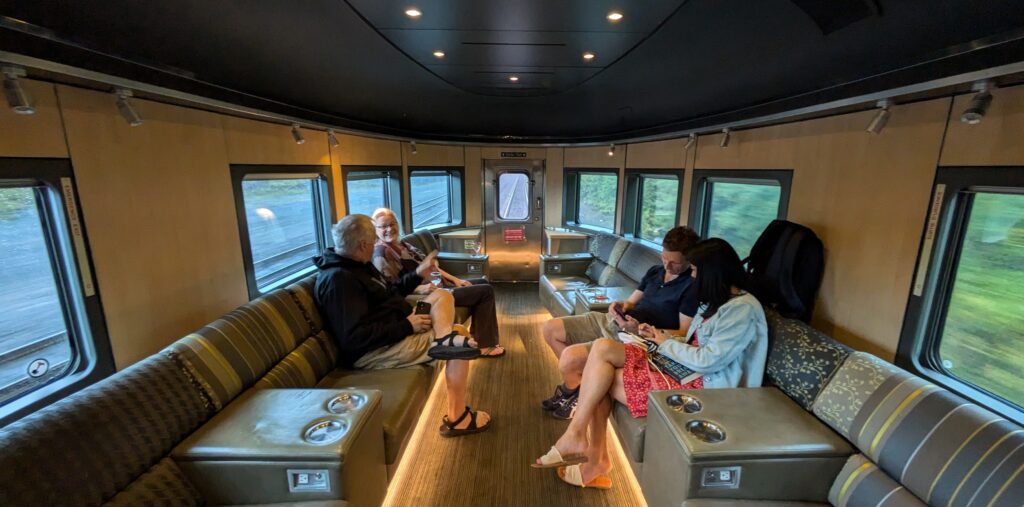 A wonderful first day of the adventure!
A wonderful first day of the adventure!
























 A wonderful first day of the adventure!
A wonderful first day of the adventure!